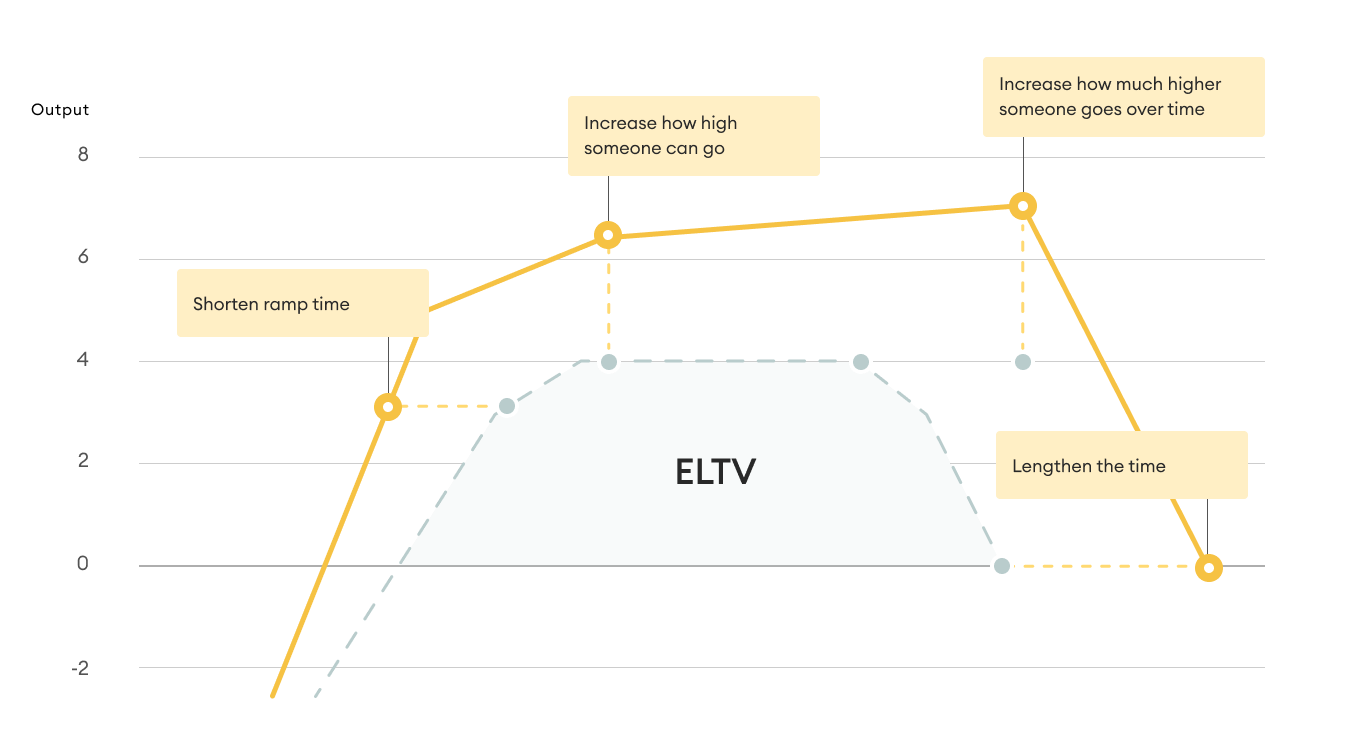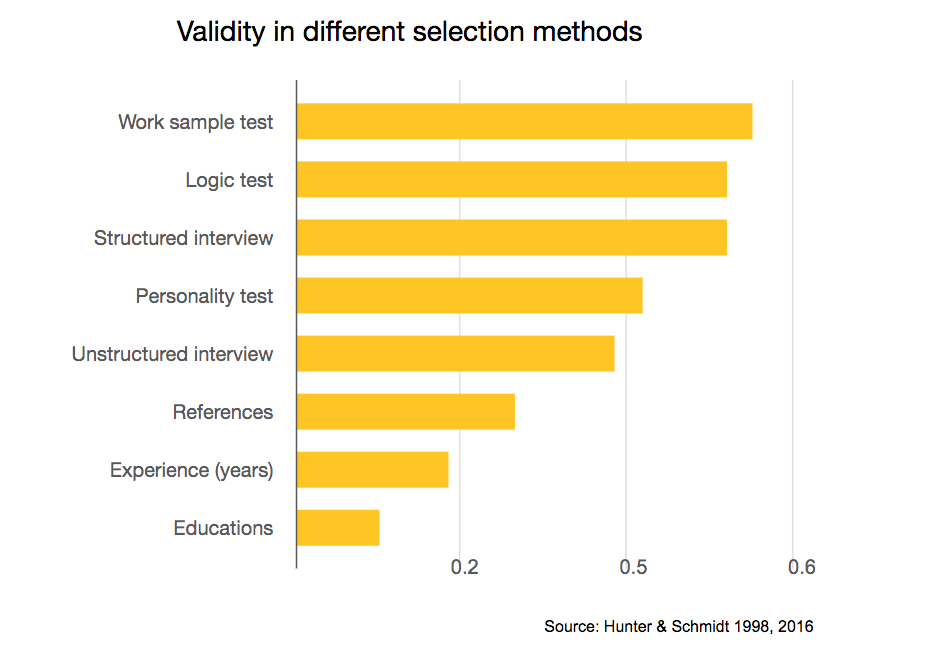Companies have historically struggled to define and calculate the value of their hires, and understandably so. Quantifying an employee’s lasting value to an organisation is a complex process requiring you to keep an eye on different metrics.
You need to understand how your hires impact your core business goals to justify costs to stakeholders, make a case for a bigger hiring budget, and introduce changes to your talent acquisition strategy.
But when you know where the money is going, how it’s spent and returned, you’re in the driver’s seat. This guide shows you how to calculate your ROI in recruitment and make the most of your talent acquisition and employee retention efforts.
Why measure ROI in recruitment?
When you have numerous competing priorities, measuring your recruitment efforts may be delegated to the bottom of your to-do list. Let’s take a look at three reasons why you should prioritise measuring your ROI:
- 1️⃣ Justify costs to stakeholders and get the C-Suite onboard for changes
- 2️⃣ Boost your hiring efficiency
- 3️⃣ Increase your quality of hires
All these factors tie into your top priority as a talent acquisition professional: find and keep top talent for your business.
Let’s unpack each bullet point in detail.
Justify business costs to stakeholders
How cost-effective are your hiring efforts? By measuring your ROI, you’ll be able to quickly pinpoint which hires impact your bottom line, which of your recruitment efforts are paying off, and what areas you’ll need to optimise or outright abandon.
Imagine you’ve just subscribed to an interview tool that helps you efficiently interview candidates and streamline the whole interview process. The best part is you can compare candidates in a shortlisted view and share scorecards with your hiring managers, saving you hours of back-and-forth meetings.
However, you are getting some pushback from management about the tool's effectiveness. In particular, management is concerned about the tool's cost and whether it’s worth it.
So you go into the analytics and see that this platform has majorly improved the quality of candidates who make it to the final interview. The tool has also helped you reduce your time to hire by 12% because the whole interview process is now automated. Now that’s an easy counter-argument to bring to the C-table. With this data, you’ll be able to justify the expense to management, especially since this interview tool helps you land more accurate hires.
The bottom line is, calculating your recruitment ROI enables you to make informed decisions on which hiring strategies, tools, or methods are proving the most effective and which areas justify further investment.
Improve hiring efficiency
How efficient is your hiring process? The only way to tell is to go into each stage of the recruitment process such as sourcing, screening, and interviewing, and figure out how much time and resources are spent at each stage. For example, if your hiring managers are stuck at the screening stage and take 12 hours to scan through CVs to identify the best candidates, you must ask yourself, is this the best way for them to spend the time?
Research led by McKinsey & Company reveals that top-performing companies have 50% shorter time-to-hire than their peers. What do they different? They track key recruitment metrics like time to fill and time to hire, enabling them to identify bottlenecks in their process quickly, adjust course, and roll out necessary changes seamlessly. These efforts lead to less time and money spent throughout the hiring process, helping hiring managers spend time where it matters most—qualifying candidates at the interview stage.
Improve quality of hire
The only way to know whether all the money you poured into hiring a candidate has paid off is to look at key indicators like new hire performance metrics, turnover, and retention rates.
Say you hire three sales representatives for your sales team, all in the space of a month.
Hire 1: Hits the ground running, picking up tasks quickly. They start closing deals within their first month at the company. Not only are they meeting their KPIs, but they’re also surpassing them. It becomes immediately apparent that you have a high performer.
Hire 2: Eases into their role gradually, taking the time to learn the company’s sales process inside out. They eventually ramp into their role and start meeting their KPIs after three months.
Hire 3: Struggles to assimilate into the team. They need help being onboarded and triple the time to do the same task as their other teammates. They don’t meet their KPIs throughout their onboarding, nor six months into the role.
Which of the three hires has brought you ROI? Hire 1 and 2, of course. Which are deemed quality hires? Again, 1 and 2. And which have eaten into your hiring budget and are considered a “bad” hire? Hire 3!
The bottom line is that every employee is different: some can contribute to your ROI immediately, some need onboarding and training to get up to speed, while others never seem to ease into the role.
The important thing for an organisation is to monitor the return on investment in its employees. By looking at your hiring process and evaluation selection methods, you’ll see whether your efforts contribute to your ultimate goal: hiring the right people for your organisation.
Key metrics to measure ROI
Below we unpack key recruitment metrics to watch out for when measuring ROI.
Time-to-Fill: This metric refers to the average time it takes to fill a job vacancy from the moment it opens until the candidate is hired. A shorter time-to-fill indicates greater efficiency and lower costs associated with prolonged vacancies and drawn-out recruitment processes.
Time to hire: Time to hire refers to how long it takes to hire the candidate, from when they enter the hiring process to accepting the offer. If your hiring process is messy and long, you’ll likely spend more resources, time and money on hiring the candidate, which will affect your ROI. Reducing your time to hire helps you to minimise these costs and optimise your hiring budget.
Cost-per-Hire: Here, you calculate the costs involved in hiring the candidate. That includes anything from setting up the job ad, recruitment agency fees (if you engaged with a third party to help you hire), candidate assessment tool costs, and internal staffing resources. When you keep an eye on your cost-per-hire, you can quickly spot where you can lower costs or optimise a certain hiring step to keep it cost-effective for the company.
Quality of hire: This is considered the holy grail of your recruitment metrics. Measuring the quality of hire helps assess how well candidates perform and contribute to the organisation after being hired. It can be evaluated based on performance reviews, productivity metrics, and feedback from managers or coworkers. Tracking the quality of hires helps you understand how effective your recruitment process is in selecting the right candidates and how well you retain your hires for long-term success.
Offer acceptance rate: This is a telling metric. If you have a high acceptance rate, you’re probably doing most things right! Meanwhile, a low acceptance rate can be a symptom of a broader problem- maybe your candidate experience is poor, or perhaps the feedback cycle is arduously slow, so by the time a candidate gets your offer, they’ve already accepted another opportunity.
Employee retention: How long your employees stay with you reflects how good you are at keeping them engaged and immersed in the role and organisation. By tracking retention, you can identify areas for improvement in candidate screening, onboarding, and overall employee experience.
Cost of early attrition: Nobody likes the word turnover, but it’s a necessary evil to monitor, especially within the first year of employment. It includes expenses such as recruitment, training, lost productivity, and impact on team morale. By understanding the cost of early attrition, you can assess the financial impact of hiring misfits and make informed decisions to reduce turnover.
Candidate experience: While not a direct financial metric, candidate experience is crucial for employer branding and attracting top talent. Monitoring candidate satisfaction, feedback, and Net Promoter Score (NPS) can provide insights into the effectiveness of the recruitment process and its impact on employer reputation.
By tracking and analysing these metrics over time, you can identify areas for improvement, optimise recruitment strategies, and demonstrate the value of talent acquisition to stakeholders within the organisation.
Next, let’s look at Employee Lifetime Value (ELTV) and how it also plays a central role in measuring ROI in recruitment.
Defining Employee Lifetime Value
In other words: ELTV single-handedly measures the ROI for all your HR initiatives. That’s huge! Let’s dig a little deeper.
ELTV focuses on five key aspects:
- The recruitment process cost
- How quickly an employee gets up to speed and ramps up into their role
- The employee’s overall performance level
- The employee’s ability to grow within the company
- The length of the employee’s employment
 The shaded area represents the total value an employee contributes to a company. You can see what areas an organisation excels at and what areas need improvement.
The shaded area represents the total value an employee contributes to a company. You can see what areas an organisation excels at and what areas need improvement.
Why is ELTV important to measure?
What if you could show how hiring, onboarding, learning and development, and cultural activities contribute to your company’s bottom line and help meet organisational goals? You can do that by leveraging recruitment data and ELTV to illustrate how your department is positively impacting business outcomes.
By calculating ELTV, you can make more informed decisions around talent management and optimise your workforce planning strategies.
How to improve the Lifetime Value of Your Employees
Employees perform at different levels. But every employee has the potential to increase their output significantly. What exactly can you do to boost the average ELTV of employees? Here are some tips:
Reduce the Time to Hire
The simplest way to enhance the value of an employee is to reduce the time needed to hire them. Through a cost-effective and efficient recruitment process, companies will spend less money on the recruit, and in turn, the employee will have less negative value assigned to them when starting in the role.
Source candidates quickly & accurately
Given that the best talent typically gets snapped up in ten days, you need to get as many high-quality candidates into your recruitment funnel as soon as possible. Make sure you’re using all the channels available to you, like: LinkedIn, job boards, community forums, referrals, and even cold outreach.
Implement fast and efficient screening
Screening can be extremely time-consuming and prone to bias. But according to research, the most efficient way to screen candidates is through psychometric tests. These tests are 100% scalable, as they can be automated and require fewer resources. They are also more objective and predictive of future job performance than CVs and cover letters.
Structured interview process
Suppose you come into an interview unprepared and ask questions according to the flow of the conversation. In that case, you’ll most likely be assessing the candidate’s ability based on your subjective gut feeling. But by being more structured and asking everyone fixed questions, you’ll have a more comparable basis to assess them objectively. This way, you’ll save time as it’ll be easier to rate candidates, and there will be less dispute over who to move forward with.
Transparency in decision data
Make all data from candidate interviews available to everyone involved in the hiring process. This allows the team to make quicker and more informed decisions and reject candidates who don’t make the cut—saving you time.
Speed up onboarding (with structure)
Another way to increase your ELTV is to ensure that the onboarding process is as efficient as possible and that it’s planned carefully. Structure it so a new hire learns things in a logical order. Ensure that all the knowledge the new hire needs to perform the job is handed over properly. Moreover, set a clear deadline when a new hire should be “role” ready. Put them in charge of an actual project, so they can apply what they have learned. Upon completion, they can be considered “ramped” and onboarded.
Hire for potential, not only experience
Candidates with high potential are usually onboarded quicker than those with more experience. This is because every new job requires you to learn company-specific aspects of the role, negating the past work experience of a candidate. Common traits among high-potential individuals, such as high general mental abilities, being goal-oriented, structured, and outgoing, allow them to use what they learn quicker and more effectively—even without years of experience.
The right person for the right job
Different jobs require different traits to perform well. A technical role requires a higher mental ability to allow for quicker problem-solving. An HR manager needs high empathy and sociability to collaborate better within a team setting. Make sure you have the person with the right traits for the job. Having a person with suitable characteristics for the job allows you to increase performance output with minimal onboarding significantly.
Increase performance levels (initially)
Raising performance levels raises the height of the ELTV curve. This is one of the most important factors to maximise the value an employee can provide.
Increase performance levels (over time)
Once we have the right candidates hired, we must ensure they continue to perform and grow in their role over their employment period. A static ELTV curve is neither productive for the company nor the employee and will likely end in a shorter employment period.
Frequent and transparent feedback
Research shows that performance levels increase when you set clear goals and increase the amount of constructive feedback shared with the employee. No matter how well a new hire performs, feedback is likely to improve their performance.
You can also use feedback to encourage the behaviours you want on the job. Good feedback has also proven to increase employee well-being and employee retention.
Get employees to stay longer
The final parameter in the ELTV curve is to lengthen the time an employee is employed. In larger cities in Sweden, the average time of employment has recently decreased from five to three years. Similar trends can be identified all over the world.
By extending that time span as much as possible, companies can increase each employee's value, while also postponing inevitable spending on new recruitment and onboarding efforts.
How to maximise ROI in recruitment
Getting recruitment right is the most essential factor for retaining employees. Hiring for long-term potential and analysing what profiles thrive and stay in different roles is key to employee retention. Here are some tips on how to do that:
Live up to your employer brand
It’s one thing to have good employer brand. You also need to live up to what you promise. Candidates want to join great companies they feel connected to but are quickly disillusioned when expectations don’t live up to reality.
Have a clear career progression
Communicate clearly defined career paths and opportunities available within the company. Ensure that you have supportive management policies to help employees accomplish their career goals.
Encourage personal values at work
Allow your employees the freedom to pursue or express the values that are important to them—even if they aren’t 100% work-related. Examples include offering flexible work hours, open dress codes, or sabbatical leave policies.
Predict performance
As you can see, the most important factor to raise the average ELTV curve (and increase the ROI of your recruitment), is to ensure the best people for the role get hired. The following table shows what research deems the most statistically valid selection methods for predicting a candidate's performance. Top of the list is psychometric assessments, followed by structured interviews.
Use objective evaluation methods when assessing candidates

Surprisingly, some of the most common methods, such as work experience or education, actually have very low validity when it comes to predicting performance. This is compounded by how time and effort-intensive it is to vet individual CVs—resulting in an inefficient approach to predicting job performance.
The single best predictor of performance is having candidates perform a work sample test, where they can be observed carrying out tasks required for the position they have applied for. (Working on a case study or having a probation period are also good alternatives.)
Unfortunately, this is also one of the most time-consuming and expensive processes to carry out, both for the company and the candidate.
The most time-efficient (and, therefore, cost-effective) way to predict performance is testing for a candidate’s general mental ability and personality.
Testing candidates early in the recruitment process minimises biases and results in a pool of candidates with actual aptitude and potential for the specific role.
With these test results, companies can save time by looking at CVs only for the top candidates or disbanding with CVs altogether. There is also an added benefit of knowing that hiring managers are basing their selection on objective and proven research.
Using the most valid performance predictors does not mean excluding other evaluation methods. When used in conjunction, you’ll be able to objectively identify candidates predestined to perform well in a certain role.
This also opens up the candidate pool to increased diversity and inclusion when we look past poor predictors like past experience in the early stages of recruitment.
Certain roles may require specific prerequisites, but by choosing to look at objective data first, one can use these parameters in the second selection rather than the first, ensuring that those with the necessary prerequisites will also be able to bring value back to the organisation.
Calculating ELTV
To calculate the ELTV, you must consider the following inputs:
- ➡️ Employee Productivity: This refers to the total value an employee contributes to the organisation regarding revenue, cost savings or other benefits. To calculate this, look at performance metrics, sales figures, or other KPIs (depending on the role).
- ➡️ Employee Potential refers to the future value an employee brings through their skills, experience, and expertise. The employee’s potential is calculated based on their current performance and willingness to learn and adapt.
- ➡️ Employee Tenure: This is how long an employee will likely stay with the organisation.To figure this out, look at historical retention rates like employee engagement and satisfaction (best captured in employee surveys and performance reviews).
Once these inputs are collected, the formula for ELTV is calculated as follows:
ELTV = (Employee Productivity + Employee Potential) x Employee Tenure.
Conclusion
Evaluating employee value is difficult but important in ensuring a high return on investment for your recruitment. Putting a number on something as vague as value can seem daunting, but by calculating your ELTV, you are one step closer to reaching positive business outcomes.
While you need to keep employee value in mind when hiring, you also need to continuously encourage your employees to grow, engage, and stay motivated to yield a high return on investment for their recruitment.
How Alva Labs helps companies maximise their ROI
Alva’s science-backed candidate assessment platform allows global HR and talent acquisition teams to make faster, smarter hiring decisions.
With Alva:
- ✅ Hire the right person every time
- ✅ Make better hiring decisions
- ✅ Efficiently assess and measure candidates
- ✅Keep your best candidates engaged, right through signing an offer
Curious to see how top brands like HappySocks and CircleK use Alva to de-risk their recruitment process and increase ROI? Book a demo today.





